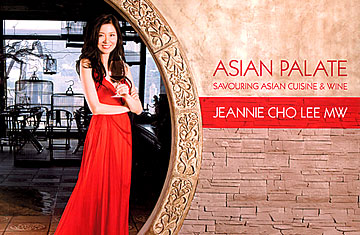
What to drink with raw sea urchin?
Lee's book reveals all
Not 30 years ago, wine in Asia tended to refer to dusty bottles of Mateus Rosé or Liebfraumilch, decaying at the backs of corner stores and wedged between the boxes of mosquito coils and the tins of evaporated milk. How times change. Today the wine world's great hope is the Asian drinker, for many of whom the consumption of grape wine is an aspirational and pleasurably exotic activity, much like sake drinking is in European or American cocktail bars. Facing stagnant sales at home, the Old World's lordliest vintners must leave their crumbling châteaus, and the New World's biggest brand managers forsake their suburban bottling plants, all to spruik their wares at Hong Kong's wine expos. The trade press is agog at a regional market thought to be growing at up to 20% a year and predicted to be worth $1.5 billion by 2017.
The timing of Asian Palate, a guide to pairing wine and Asian food from Jeannie Cho Lee, is thus impeccable. The South Korean – born author is the first Asian to become a Master of Wine (an international group of fewer than 300 experts so certified by London's Institute of Masters of Wine). But hers does not, on first perusal, come across as a serious work. The cover image of Lee posing in a flowing red evening gown isn't calculated to enhance the book's credibility, and there appears to have been no budget for original food photography — so the reader is served up stock-house images of congealing soups and stone-cold stir-fries (or so they appear), devoid of context. Then there are the baffling omissions: Asian Palate has nothing to say about Indonesian, Filipino or even Vietnamese cuisine, which with its French connections and global popularity would surely have been a natural inclusion.
At the same time, how many reference works do you know that can give advice on pairing wine not merely with Indian dishes, but to varieties as specific as Gujarati vegetarian and coastal west Indian? None, of course. And there are probably no other books that can tell you which wine to choose when ordering Korean soup not simply as an accompaniment but as a main meal (the answer is a Côtes du Rhône Villages, a sparkling wine or a dry rosé), or what to pair with northern Chinese offal dishes (try a Cahors or Madiran). Such is the exclusive and valuable remit of Asian Palate, and very browse-worthy it is too. Many wine writers have pronounced too generally on wine and Asian food. Lee's detailed advice is therefore very welcome. Now if only they could get rid of that page 10 picture of her, clad in a flimsy lilac number, leaning on a pillar and looking for all the world like a jobbing actress in a karaoke clip.
